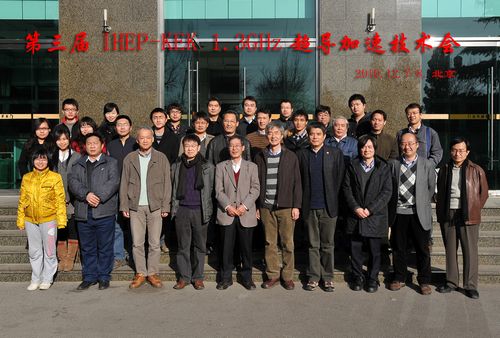Sino-Japanese cooperation on R&D of superconducting technologies
Superconducting technologies are more and more applied to the construction of particle accelerators, hence having become
 |
| the attendees of the third IHEP-KEK 1.3GHz SRF workshop |
To further improve BEPCII and technically prepare for other projects like CSNS and ADS, the Institute of High Energy Physics (IHEP) is now developing a set of 1.3 GHz superconducting accelerating components. To strengthen cooperation in the field between IHEP and KEK, a workshop was held from December 7 to 8, 2010, in Beijing.
Plans for the cooperation and developing the 1.3 GHz superconducting accelerating components were discussed and made.
Superconducting Radio Frequency (SRF) technology is the future of accelerators due to its advantages in energy efficiency and beam dynamics. Superconducting cavities have different frequencies, among which 1.3 GHz SRF is the most advanced so far. Initiated from the TESLA research at DESY 20 years ago,
1.3 GHz SRF has become the engine of the superconducting accelerator R&D worldwide. The International Linear Collider (ILC), which will use 16,000 1.3 GHz 9cell cavities with challenging gradient of 35 MV/m, leads the trend of development. Besides the high energy frontier of ILC, 1.3 GHz SRF technology will also be applied to next generation light sources, i.e. the Xray Free Electron Laser (XFEL) and Energy Recovery Linac (ERL) based light sources, high energy & high intensity proton linacs for neutrino physics, the Accelerator Driven Subcritical System (ADS) for nuclear waste transmutation and electric power production, and so on. Some of these mega-science projects have been already included in the roadmap of CAS and IHEP for the next decades.